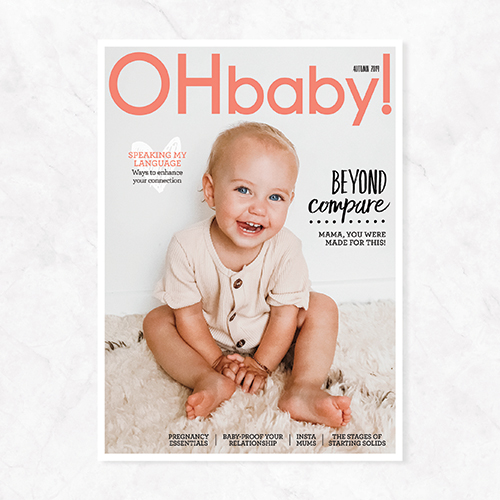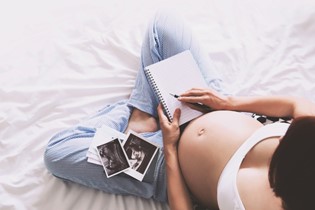The benefits of raising bilingual babies

Sarah Tennant talks to four Kiwi families whose homes have more than one language.
Eleven-month-old Kien Jeoi technically doesn’t speak even one language yet, let alone two. But her mother Maria, who hopes Kien Jeoi will learn to speak her native Cantonese, has noticed one good sign: Kien Jeoi calls her Kiwi grandpa “YeYe”. Maria is probably more attuned to her baby’s babbles than most mothers. In her job as a speech and language therapist, she has worked with plenty of bilingual children. Here she runs into some of the pervasive myths of bilingualism – that it causes language delays, and that non-English-speaking parents should try to speak English, however broken, to their children, rather than their native tongue.
To both these concerns Maria gives a definite “No”. Though the number of words a bilingual child knows is spread over two languages, their language acquisition isn’t at all delayed compared to that of monolingual children. And Maria stresses that speaking any language well and often to a child is far better than trying to stumble through the ‘right’ one but, out of embarrassment, speaking it less.
‘Bilingual’ almost never means ‘knows two languages equally well’. Most bilingual speakers have a stronger and a weaker language. For example, children whose native language is not English but who are bombarded with English from TV, movies, daycare, playgroup, friends and relatives, will likely end up with their native language as the weaker one. However, it’s important to note that just hearing a language isn’t enough to properly learn it; parents who want their child to learn their native language lose valuable opportunities by assuming their tot will naturally pick it up just from hearing it spoken in the background. Without interaction, hearing Granny chatter away in German will be like hearing birdsong all day long – the sounds might become familiar, but they won’t acquire meaning. (If you’ve ever played foreign-language audiobooks in the background while you’re at home in the hopes of subconsciously picking up Spanish, you’ll know what I mean!)
Instead, a language needs to really be in a child’s face. Talking to the child, requiring responses in the target language, singing, reading books, creating a practical need for the language by visiting people who only speak that language – the more a parent does, the more the child will learn.
Because of this need for immersion, Maria recognises that true fluency in Cantonese will be an uphill battle for Kien Jeoi. Chinese-language playgroups in her area tend to be Mandarin-speaking, not Cantonese; and because Maria and her husband Sam have few Cantonese-speaking friends who live locally, Kien Jeoi’s sources of Cantonese are currently limited to Maria and daily Skype calls with her grandma. (Sam is studying the language, but is not yet fluent.)
Yet while it’s far too early to predict her eventual level of fluency, studies show that Kien Jeoi is already subtly different from her English-babbling baby friends. Brain scans on babies exposed to two languages show that they are already acutely aware of the differences between languages, and work harder at processing language than their monolingual peers. Later on, bilingual kids demonstrate more creative thinking and heightened ability to understand different points of view.

Hailing from the Netherlands, Marian Bosch visited New Zealand and ended up marrying a Kiwi. Initially, Marian had her own language concerns. Despite having learned English at school and having spent six months working in England to improve her language skills, she still struggled with the Kiwi accent.
Meanwhile her husband Matt had grown up exposed to Dutch on his mother’s side, and spoke it a little. Both Matt and Marian were keen for their daughters, Victoria and Valerie, to learn at least conversational Dutch, so they could maintain a connection with Marian’s family overseas.
Marian speaks mostly Dutch to the children when they’re alone, but for Matt’s sake, conversations in his presence are usually in English. While her daughters understand her Dutch perfectly, they still prefer to respond in English – a very common trait in young bilingual kids, who (perhaps like all of us) tend to take the path of least resistance! Some parents insist children respond in the ‘correct’ language, while others are happy for their children to code-switch, changing languages even mid-sentence while they gradually figure out which words belong where.
As always in an isolated nation like New Zealand, immersion is the main problem. A steady stream of Dutch-language picture books kindly posted from family in the Netherlands to Marian has been a helpful resource, but she laments the lack of other Dutch-speaking children for the girls to practise with. Only 24,000 people in New Zealand speak Dutch – that’s just 1% of the population – despite a significant Dutch presence among early New Zealand settlers.
Knowing a language that no-one else does can cause the odd socially awkward moment, as I’ve discovered. I was once handed a book by Marian’s daughter Victoria, who shyly indicated that I could read it to her if I liked. I was happy to oblige – until I noticed it was in Dutch. It turns out that explaining to a preschooler that you don’t know how to read a twelve-page picture book is not a great ego boost. Fortunately, it doesn’t take kids long to figure out who speaks what language and adjust their conversation accordingly. Victoria has never asked me to read to her again – either because she’s achieved that milestone, or perhaps because she’s written me off as a hopeless dullard.
KŌRERO MĀORI
Anna Burkitt is Pākehā but connecting her children with their Māori heritage is clearly a passion for her. For the last five years she and her children (13, 10 and 2) have been learning te reo Māori together, largely with the help of Te Wānanga o Aotearoa.
You might think learning te reo Māori in Aotearoa would be simple – after all, it’s one of our three official languages. Surprisingly, Anna hasn’t found it so. For one thing, there’s no monolithic ‘Māori’ language to learn – different iwi use different dialects. There’s also a lack of cheap or free resources available, especially for kids of varying ages. The latest census shows that only 3.7% of the population speaks te reo Māori, and it’s not compulsory in our schools.

Sadly, social attitudes have been another barrier for Anna. Friends and even schoolteachers have been dubious about her showing interest in Māori culture and language. There’s a certain stigma about it, she says. On the other hand, she has had much arohanui from Māori elders for teaching her children to take pride in their Māori heritage. Meanwhile, her own goals are clear: “For me, it’s about building a foundation for my children, and teaching them about where they come from and to be proud of who they are – both the Māori and the European sides. It’s about teaching them the values, beliefs and the history of their whakapapa. I strongly believe that when people connect to their ancestry, and identify with it and are proud of it, they get a much greater understanding of all the values, morals, beliefs and ways of living that our ancestors have handed down to us”.
TAKING IT ON THE ROAD
When Auckland-born Hannah van Ballegooy acquired a Dutch fiancé, she set about acquiring the Dutch language too. Her reasons were pragmatic as well as romantic. “If I wanted to know what was going on at the in-laws’, I thought I’d better learn their language!”, she says. A trained nanny, Hannah says she planned on bilingualism for her kids from the get-go, and thoroughly researched the best ways to foster the second language.
A common approach to bilingualism is the one parent-one language model. Hannah and Rick decided that Rick would only speak Dutch to the children (Annelise, Andre and Reuben). Hannah, while learning, wasn’t confident and was wary of modelling poor grammar, so initially she limited her Dutch-speaking to reading picture-books aloud. Rick had some learning to do, too – as with many children of immigrants, he had learned to speak Dutch, but not read or write it.
In 2013 the older two children began attending Holland House, an Auckland Dutch language school. The Ministry of Education allows children to skip school for a few hours a week in order to attend a language-based school.
The hard work paid off when husband Rick’s work sent the family to the Netherlands for a year – which has now turned into 21 months (and counting). While it has been a steep learning curve for the family, the benefits of total immersion made themselves clear very quickly. The three kids are now making friends, joking, singing and, to Hannah’s delight, even sleep-talking in Dutch.
There has been the odd gaffe, of course. The kids once thought they were telling their neighbours that Hannah and Rick had slept in; what they actually reported was that their parents had died in their sleep!
Though the family will soon be back in New Zealand for good, Hannah is determined not to let the kids’ hard-won fluency fade. The boys will be returning to Dutch school, and the family is planning to get a puppy and instigate a rule that everyone speaks to the dog only in Dutch!
But it seems the language bug has well and truly infected the kids. Annelise, the oldest, has found herself easily picking up bits and pieces of French while in the Netherlands (largely from the backs of food packets!) and is also keen to pick up te reo Māori when the family returns home. Hannah credits this keenness to Annelise’s brain ‘switching on’ early to language differences. She’s probably right: children who learn two languages early do seem to find it easier to add more languages later on. It’s interesting to speculate on the future of languages in New Zealand. Trade experts argue that Mandarin may become necessary for Kiwi businesspeople to learn; politicians wrangle over whether or not te reo Māori should be mandated in schools; immigrants speaking Afrikaans, Hindi and French continue to make their homes here. Learning another language may be a small step for a baby, but it’s a giant leap for New Zealand.
Sarah Tennant lives in Te Awamutu with her husband and four children (Rowan, Miles, Morris and Lochlan). Her attempts to learn Spanish with Duolingo stalled at “The donkey eats the library”, which she hopes will suffice for casual tourism.

AS FEATURED IN ISSUE 45 OF OHbaby! MAGAZINE. CHECK OUT OTHER ARTICLES IN THIS ISSUE BELOW

















